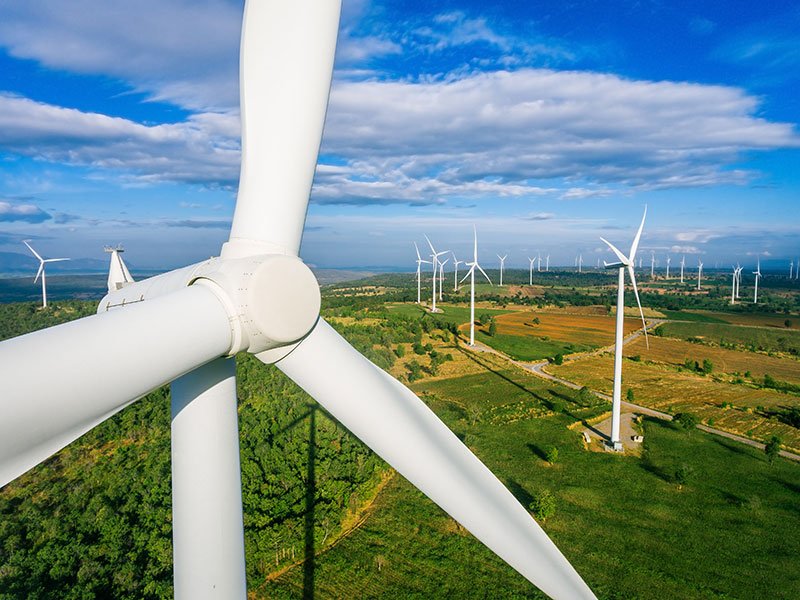When Australian Greens Leader, Adam Bandt raved last week about the US administration’s $1.5 trillion Inflation Reduction Act subsidy largesse for America’s green energy reindustrialisation, he again called for a $100 billion response from our federal government and a tax on fossil fuel companies to pay for it.
I immediately thought of that joke about the fish:
Two fish are swimming along merrily when an older fish swims up to greet them. “Hi boys. How’s the water?” he asks. The younger fish swim on for a bit before one turns to the other and wonders: “What the heck is water?”
Mr Bandt is not the only (middle-aged) fish in the small shallow pond of Australia’s political class who demonstrates an under-developed ‘situational awareness’.
Amid a tsunami of geopolitical, technological, and socio-economic change, if he and other disciples of net-zero nirvana came up for air, they may see the depth and breadth of the turbulent waters Australia is now adrift in.
There are myriad inconvenient truths emerging. Not just about the IRA, but also of the dismal economics, energy insecurity and sweeping bureaucracy of the global green energy transition in general.

There are also realities about Australia’s structural weaknesses and capability gaps and the shade they throw on our own net zero-driven reindustrialisation and renewable superpower ambition.
It is true that the Biden administration’s IRA – the linchpin of the big-spending and increasingly unpopular Bidenomics era – has ushered in an unprecedented wave of subsidised private investment for hundreds of projects on everything from electric vehicles to wind and solar farms to battery and green energy storage tech.
It has also forced other countries, including Australia to scramble to come-up with their own mini-IRAs and green industry policies.
But 16 months since the IRA was introduced in August 2022, problems abound with stalled or failed projects, bankruptcies, immature technologies, soaring maintenance costs, myriad regulatory delays and skilled worker shortages.
And while COP28 closed with a vague agreement calling for “transitioning away from fossil fuels in energy systems, in a just, orderly and equitable manner,” the broader pushback against the net-zero mandates has intensified. It is becoming clearer that voters and industry are unwilling to pay for it.
Just a few of the pushback highlights:
- The European Union’s Green Deal announced four years ago, is unravelling because Brussels is realising it can’t meet the scale of subsidies of the US IRA.
- UK Prime Minister Rishi Sunak cancelled an electric-vehicle mandate due to take effect in 2030, at the same time he promised to issue new licenses for oil and gas drilling in the North Sea. Even opposition Labour has scaled back its green spending commitments.
- Germany is in the throes of political turmoil after a recent court ruling disallowed a finance plan (gimmick) to meet its net-zero pledges.
- India and China keep building new coal plants.
- In the US last week, 4000 car dealers signed a letter asking President Biden to “tap the brakes” on the mandate requiring two thirds of all car sales to be EVs by 2032. After the initial wave of early adopters, EVs sales have stalled, and inventory is piling up.
- US Congress spent US7.5 billion to build 500,000 EV charging stations around the country. Two years later not one has been built.
- Estimates claim about 30 per cent of US state-contracted offshore wind capacity has been cancelled and another 25 per cent may be rebid due to regulators baulking at high rates to consumers.
Green energy transition teething problems? Sure, some. But a recent WSJ editorial summarised the common denominator among all the above as “reality”.
So, back to our reality Down Under and whether we have the situational awareness to do an honest stocktake: a clear-eyed assessment of what we got and what we don’t got to design and execute a globally competitive 21st century industry policy that raises our game, builds and diffuses new skills throughout the economy and improves declining productivity and living standards.
Australian green energy superpower champions constantly brag that Australia’s natural net-zero and renewable energy advantages are abundant land, wind and solar. That’s not nothing. But the US has all that, plus a technology and military industrial base @ superpower scale.
Even for a mid-sized economy, what Australia hasn’t got is a much longer list of non-trivial structural and skills deficits that have come from decades of relying on the nation’s rich resources.
We have gutted the manufacturing and industrial base, and sleepwalked through every iteration of the global technology revolution from semiconductors in the 1960’s through to Artificial Intelligence today.
InnovationAus.com has extensively covered the nature and scope of many sobering indicators of a country that is starting off on the back foot technologically and structurally at a time of massive technological, socio-economic, and geopolitical change. Just some of that thinking from across the ecosystem is here, here and here.
Those key indicators range from Australia’s low economic complexity which ranks in line with developing countries; the glaring absence of a robust and resilient middle-industrial market which is critical for high value exports and for diffusing globally competitive skills throughout the economy; a broken R&D and commercialisation system; and a dearth of management savvy capable of pursuing and stewarding higher risk, scalable,new-to-the-world technologies and projects for Australia and the world.
The latter is too often overlooked. It is a critical missing leadership tier in any re-industrial plan whether green or not. Closing that gap over a generation is hard enough. Doing it more quickly than that is near impossible.
The sheer scope and scale of the innovation, energy and labour system complexities that comes with net-zero mandates are challenging most countries, not just Australia. But Australia is not starting along this path with clearly defined advantages or adequately diffused in-demand skills.
Perhaps a growing realisation of the structural and competencies gaps is why the government has delayed formalising critical policy reforms – industry policy; industrial relations; and the Defence Industry Development Strategy – until next year and up to the May Budget.
Some energy, and innovation industry players claim the reason for the delay is quite simple: “No one in government wants this job” quipped one high profile industry CEO, referring specifically to complexity to designing a coherent industry policy.
Treasurer Jim Chalmers, who has clearly taken the lead championing the Net-Zero-led re-industrialisation ambition says the nation’s industrial policy must be “recast and modernised”.
He emphasises that Australia is not seeking to emulate the US IRA. Instead, he promises a “uniquely Australian” plan that helps stems the flow of investment capital and know-how to the US (and elsewhere) and accelerates the number of renewable energy projects here.
Yet it’s hard to see the true scope and intent of the government’s reindustrialisation plan at this point, beyond targeting and subsidising big companies for big projects that may or may not be economical or globally competitive.
The investment criteria for the signature funding vehicle, the $15 billion National Reconstruction Fund (NRF) seems primarily suited to attract big corporate and private equity players rather than medium-sized innovators.
Many in the domestic tech and innovation sectors were also surprised to see that the NRF matching funds are open to Australian subsidiaries of multinational companies.
There is no doubt that tech and industrial subsidiaries of foreign-owned firms are key players in any domestic innovation ecosystem. But the bulk of those tech giants operating here dominate by doing little more than the sales and marketing of tech that was designed and built elsewhere.
In other words, they do little to help Australia rise in the global industry complexity rankings.
Meanwhile, the small cohort of sophisticated middle market advanced manufacturers and startups are struggling to see clearly the pathways to success as a result of having to deal with too many siloed government departments and agencies.
The need for whole-of-government co-ordination of any reindustrialisation policy is greater than ever and remains unmet.
All this and more has been clear to many tech and innovation leaders, funders and advocacy groups for a very long time. These operators see the choppy waters they are attempting to swim through.
But successive governments and treasuries have ignored the disruptive tech megatrends for decades.
In that sense, the oft-used metaphor for Australia is that of the proverbial frog who dies in a bucket of gradually heated water because its oblivious of the danger.
It’s a powerful metaphor. But it’s a myth. Science shows us that any frog will desperately try to escape the bucket as the water heats up. The question for Australia is, will we?
Do you know more? Contact James Riley via Email.

